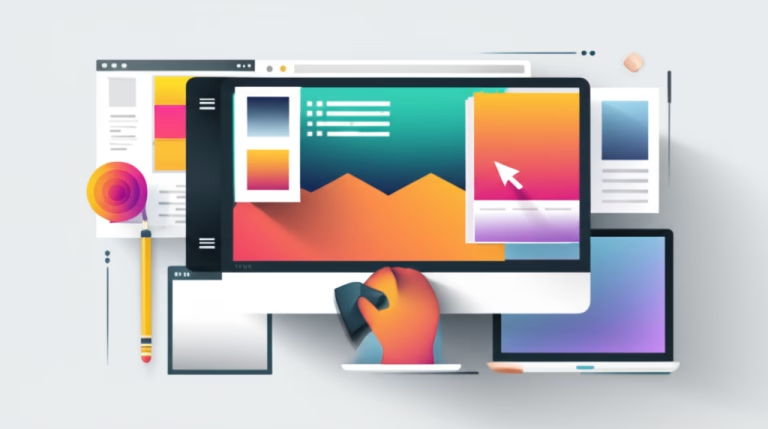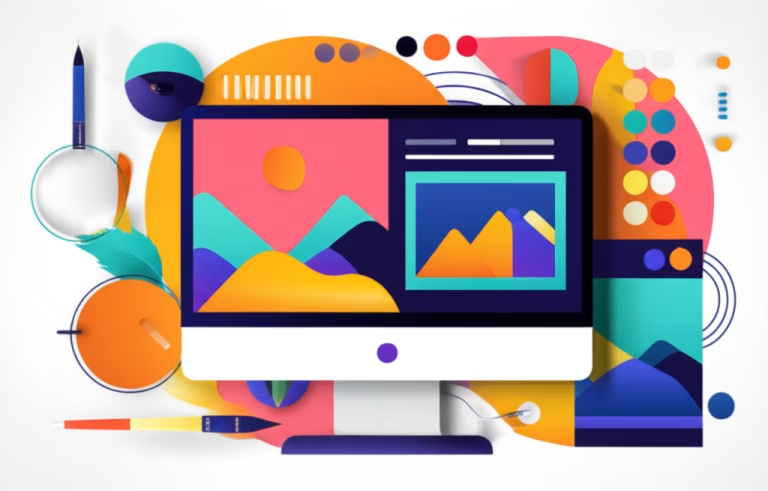In the vast and vibrant universe of graphic design, a well-constructed portfolio is your calling card, the key that unlocks incredible opportunities. For beginners, the idea of creating a portfolio may seem daunting, but in reality, it’s a journey of self-discovery and growth. This article has been carefully crafted to guide you through this process, demystifying the steps and offering practical tips so that you can create a portfolio that not only showcases your skills but also your passion for design.
Table of Contents
The Importance of a Portfolio for Beginners in Graphic Design
Before we dive into creation tactics, it’s essential to understand why a portfolio is so crucial, especially for those who are just starting. Imagine you’re in a job interview or trying to win a freelance client. What would you show to prove your skills? A traditional resume, no matter how well-crafted, cannot convey the essence of your visual talent. That’s where the portfolio comes in.
A portfolio is more than just a collection of work; it’s a visual narrative about who you are as a designer. It demonstrates your ability to solve problems, your understanding of design principles, your creativity, and your attention to detail. For beginners, the portfolio is a powerful tool to compensate for the lack of professional experience, showing potential and enthusiasm. It allows you to stand out in a competitive market, proving that, even without years of practice, you have the necessary skills to deliver quality results.
Furthermore, the portfolio is an excellent means of self-assessment. By organizing your projects, you revisit your creative process, identify your strengths, and areas that need improvement. It’s a practical exercise that boosts your growth as a designer, turning each project into a valuable lesson.
How to Choose the Right Projects for Your Portfolio
Selecting projects for your portfolio is a crucial step. It’s not just about including everything you’ve done, but rather choosing those that best represent your skills and the type of work you want to do. For beginners, this can be one of the most challenging parts, but with the right strategies, you can create an impactful collection.
- Quality Over Quantity: It’s better to have a few high-quality projects than many mediocre ones. Focus on selecting work that you are truly proud of and that demonstrates your best skills.
- Variety of Projects: Include projects that demonstrate different areas of design, such as visual identity, packaging design, web design, illustration, among others. This shows your versatility and adaptability.
- Personal Projects: If you don’t have many professional works yet, don’t worry. Personal projects are excellent for showcasing your creativity and passion for design. Create fictional projects with well-defined briefs, exploring themes and techniques you enjoy.
- Case Studies: For each project, include a brief description of the creative process, the challenges faced, and the solutions found. This shows your ability to think critically and solve design problems.
- Constant Updates: Your portfolio is not a static document. As you evolve as a designer, add new projects and remove those that no longer reflect your current skill level.
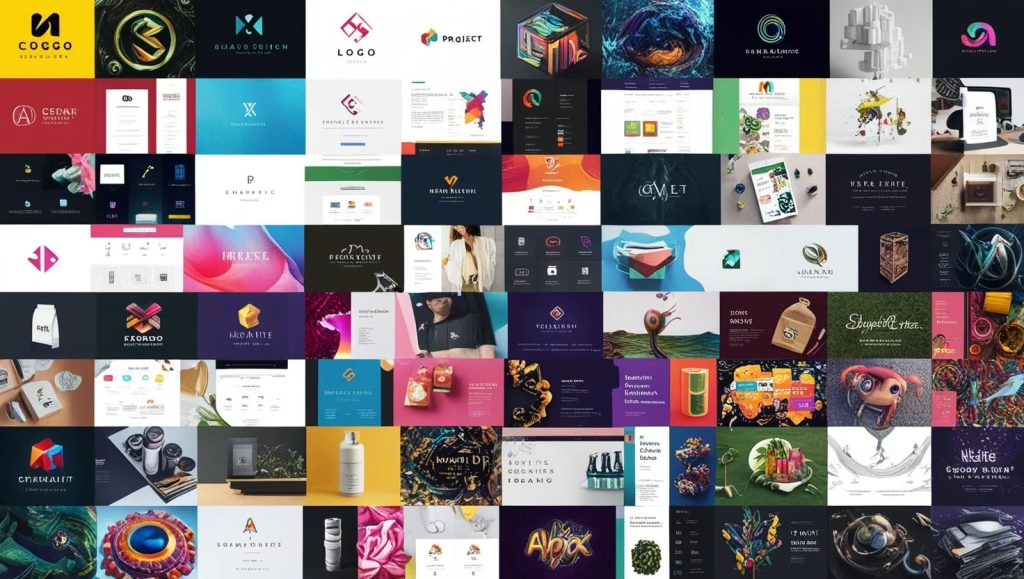
Tools and Platforms to Create Your Online Portfolio
The digital age has gifted us with a plethora of tools and platforms to create online portfolios easily and affordably. For beginners, these tools are true allies, allowing you to create a professional portfolio without the need for advanced programming knowledge. Here are some popular options:
- Behance: An Adobe platform that allows designers to create an online portfolio and share their work with the creative community. It’s ideal for those seeking visibility and networking.
- Dribbble: A community of designers where you can share small snippets of your work and receive feedback from other professionals. It’s a great option for those who want to show their creative process.
- Adobe Portfolio: Integrated with Adobe Creative Cloud, it allows you to create a personalized portfolio with professional and easy-to-use templates.
- WordPress: A versatile platform that allows you to create a complete website with an integrated portfolio. It’s a great option for those who want more control over the design and functionality of the site.
- Squarespace: An intuitive and easy-to-use platform, ideal for those who want to create an elegant and professional portfolio without needing programming knowledge.
- Cargo: A platform designed specifically for design portfolios, with modern and customizable templates.
When choosing a platform, consider your goals, your budget, and your level of technical knowledge. If you are starting out, more intuitive platforms like Squarespace and Adobe Portfolio may be a good option. If you are looking for more flexibility and control, WordPress may be more suitable.
The Psychology of Colors in Your Portfolio
The psychology of colors is a fundamental aspect of graphic design, and your portfolio is no exception. The colors you use in your portfolio can influence how your work is perceived, conveying emotions and sensations to visitors. For beginners, understanding the basic principles of color psychology can be a differentiator.
- Warm Colors (Red, Orange, Yellow): Convey energy, passion, enthusiasm, and urgency. They are ideal for projects that seek to attract attention and create a sense of action.
- Cool Colors (Blue, Green, Purple): Convey calmness, confidence, security, and sophistication. They are ideal for projects that seek to convey credibility and professionalism.
- Neutral Colors (White, Black, Gray): They are versatile and can be used to create a neutral background or to highlight other elements. White conveys cleanliness and simplicity, while black conveys elegance and sophistication.
When choosing colors for your portfolio, consider the type of work you do and the audience you want to reach. If you work with fashion design, vibrant and bold colors may be a good option. If you work with corporate design, more neutral and sober colors may be more appropriate.
Practical Example:
Imagine you are creating a portfolio to present packaging design projects for children’s products. Vibrant colors like yellow, orange, and light blue can be used to convey joy and fun. For an interior design portfolio, colors like green and blue, combined with neutral tones, can create a sense of harmony and sophistication.
Case Study:
A study conducted by the University of Winnipeg showed that blue is the color most associated with trust and security, while red is associated with passion and energy. This data can be used to guide color choices in your portfolio, depending on the effect you want to create. Source: University of Winnipeg
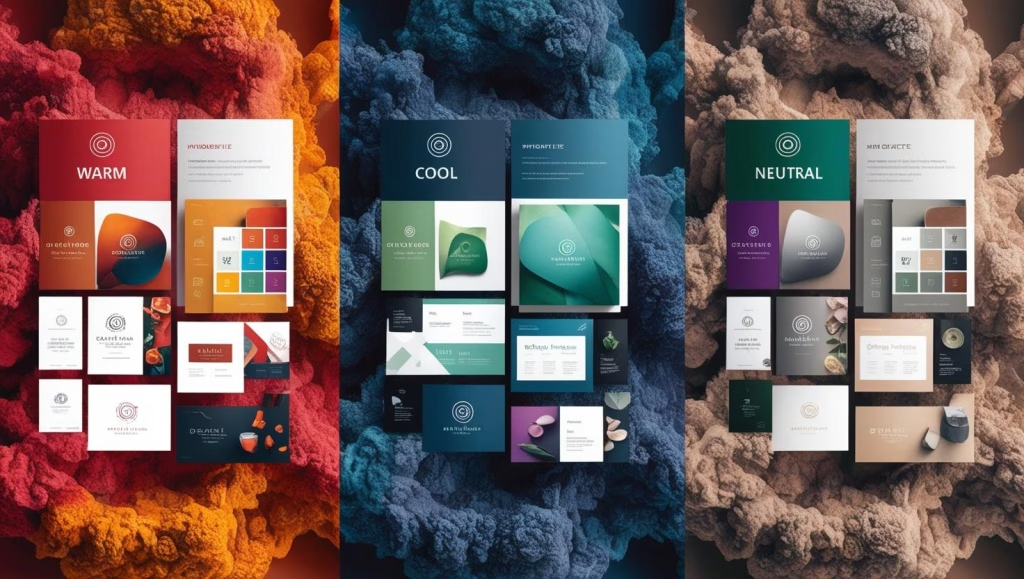
Practical Tips for an Impactful Graphic Design Portfolio
Creating an impressive portfolio is not just about choosing the right projects and the right colors. You need to think about every detail to create a memorable experience for those who visit your site. Here are some practical tips that can make all the difference:
- Clean and Intuitive Design: Your portfolio should be easy to navigate, with a clean and organized design. Avoid elements that distract from your work.
- Legible Typography: Choose legible fonts that complement your design style. Avoid overly ornate or difficult-to-read fonts.
- High-Quality Images: Use high-resolution images to showcase your projects in the best possible quality. If necessary, invest in professional mockups to present your work more impactfully.
- Detailed Descriptions: For each project, include a detailed description of the creative process, the challenges faced, and the solutions found. This shows your ability to think critically and solve design problems.
- Testimonials and Recommendations: If you have already worked with clients, ask for testimonials and recommendations to add to your portfolio. This increases your credibility and confidence.
- Contact Information: Make sure your contact information is visible and easy to find. Include your email, phone, and links to your social networks.
- Responsiveness: Your portfolio should be responsive, meaning it should adapt to different screen sizes, such as computers, tablets, and smartphones.
- SEO: Optimize your portfolio for search engines like Google to make it easier to find. Use relevant keywords in your descriptions and titles.
The Next Step: Promoting Your Portfolio
Creating a portfolio is just the first step. For it to actually generate results, you need to publicize and promote it. Here are some strategies you can use:
- Social Media: Share your portfolio on social media, such as Instagram, LinkedIn, Pinterest, and Twitter. Use relevant hashtags to reach a larger audience.
- Networking: Participate in design events, workshops, and conferences to meet other professionals and promote your work.
- Online Communities: Participate in forums and online design communities to share your portfolio and receive feedback from other professionals.
- Freelancing: Sign up on freelancing platforms like Upwork and Fiverr to find job opportunities and add new projects to your portfolio.
- Blog: Create a blog to share your knowledge and experiences in design. This helps build your personal brand and attract more visitors to your portfolio.
- SEO Optimization: Optimize your portfolio with relevant keywords to make it easier to find in search engines.
Remember that building a graphic design portfolio is an ongoing journey. Don’t worry if your portfolio isn’t perfect at first. The important thing is to start, learn from your mistakes, and evolve with each project. With dedication, patience, and a passion for design, you will be on the right path to creating a portfolio that opens doors to incredible opportunities.
Recommended Books for Beginners in Graphic Design:
- “Thinking with Type” by Ellen Lupton: A complete guide to typography, essential for any graphic designer. Available on Amazon
- “The Design of Everyday Things” by Donald A. Norman: A fundamental read on interaction design and usability, which every designer should know. Available on Amazon
- “Steal Like an Artist” by Austin Kleon: An inspiring book about creativity and how to find your own voice as a designer. Available on Amazon
- “Graphic Design: A Concise History” by Richard Hollis: A historical and practical overview of the principles of graphic design. Available on Amazon
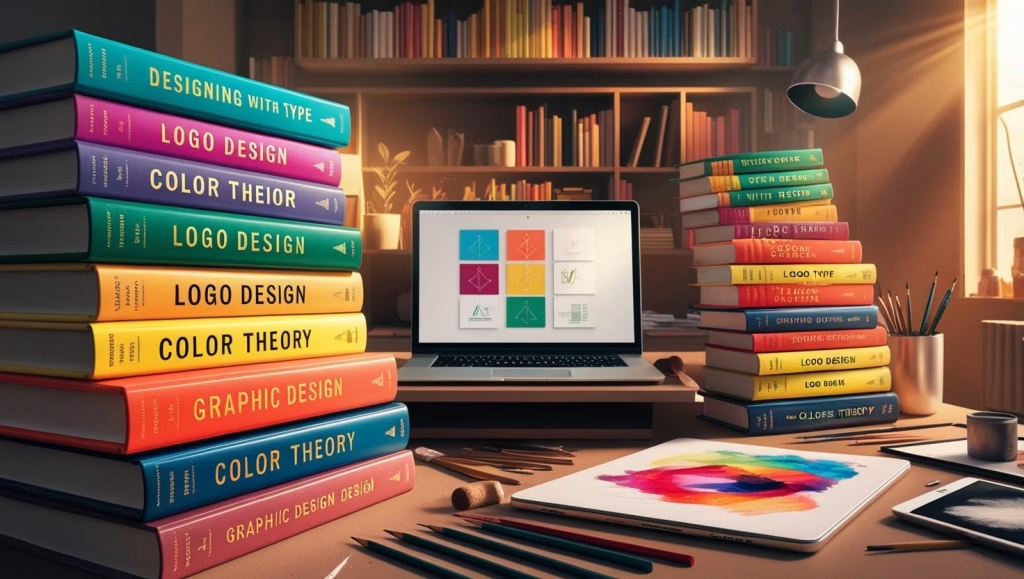
I hope this detailed guide has been helpful to you. Remember that creating a portfolio is a continuous process of learning and improvement. Don’t be afraid to experiment, make mistakes, and learn from them. The most important thing is to show your passion for design and your willingness to grow as a professional. Good luck!


